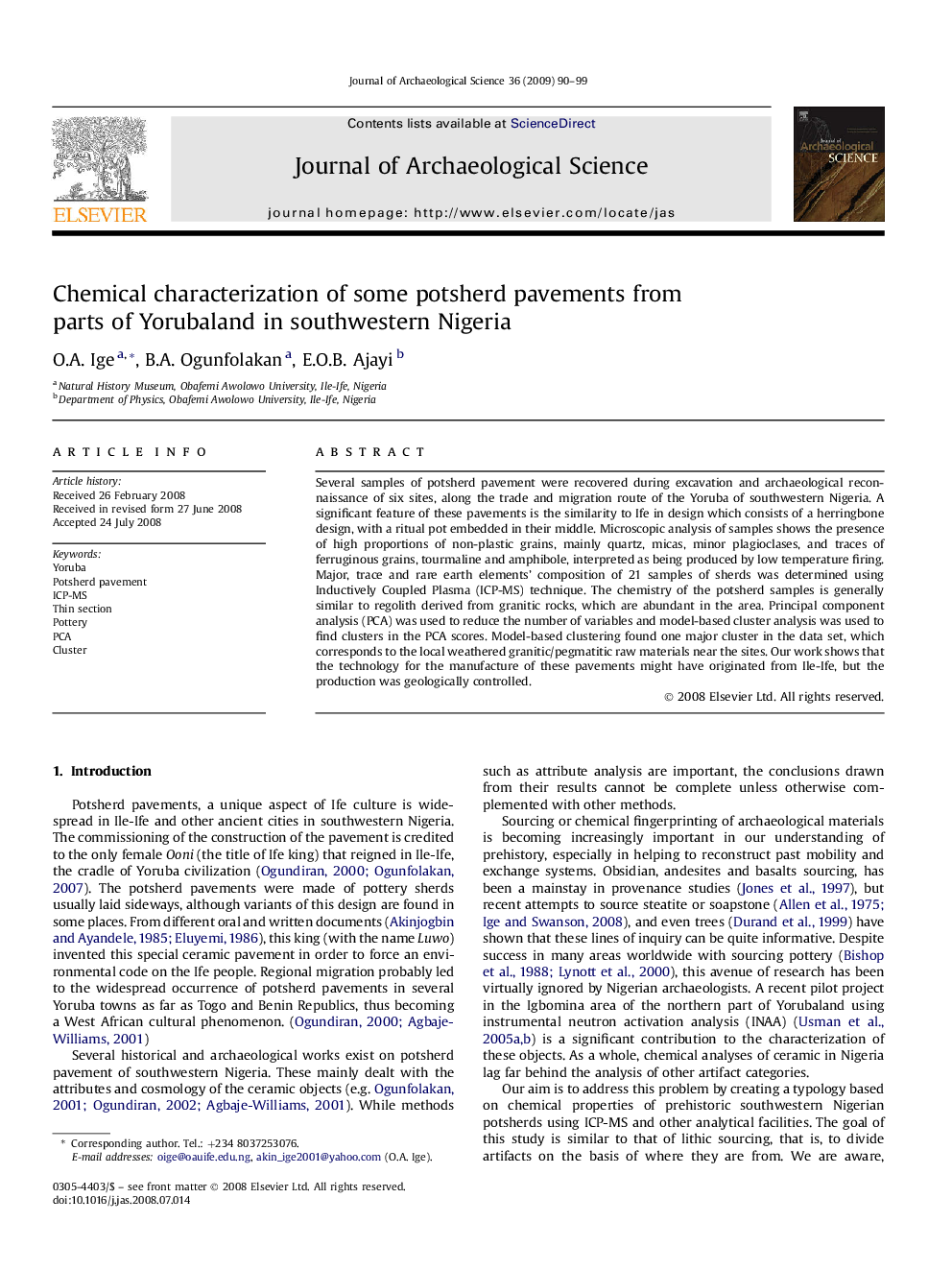| Article ID | Journal | Published Year | Pages | File Type |
|---|---|---|---|---|
| 1037123 | Journal of Archaeological Science | 2009 | 10 Pages |
Several samples of potsherd pavement were recovered during excavation and archaeological reconnaissance of six sites, along the trade and migration route of the Yoruba of southwestern Nigeria. A significant feature of these pavements is the similarity to Ife in design which consists of a herringbone design, with a ritual pot embedded in their middle. Microscopic analysis of samples shows the presence of high proportions of non-plastic grains, mainly quartz, micas, minor plagioclases, and traces of ferruginous grains, tourmaline and amphibole, interpreted as being produced by low temperature firing. Major, trace and rare earth elements' composition of 21 samples of sherds was determined using Inductively Coupled Plasma (ICP-MS) technique. The chemistry of the potsherd samples is generally similar to regolith derived from granitic rocks, which are abundant in the area. Principal component analysis (PCA) was used to reduce the number of variables and model-based cluster analysis was used to find clusters in the PCA scores. Model-based clustering found one major cluster in the data set, which corresponds to the local weathered granitic/pegmatitic raw materials near the sites. Our work shows that the technology for the manufacture of these pavements might have originated from Ile-Ife, but the production was geologically controlled.
